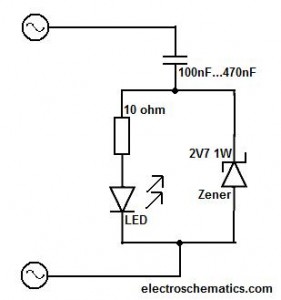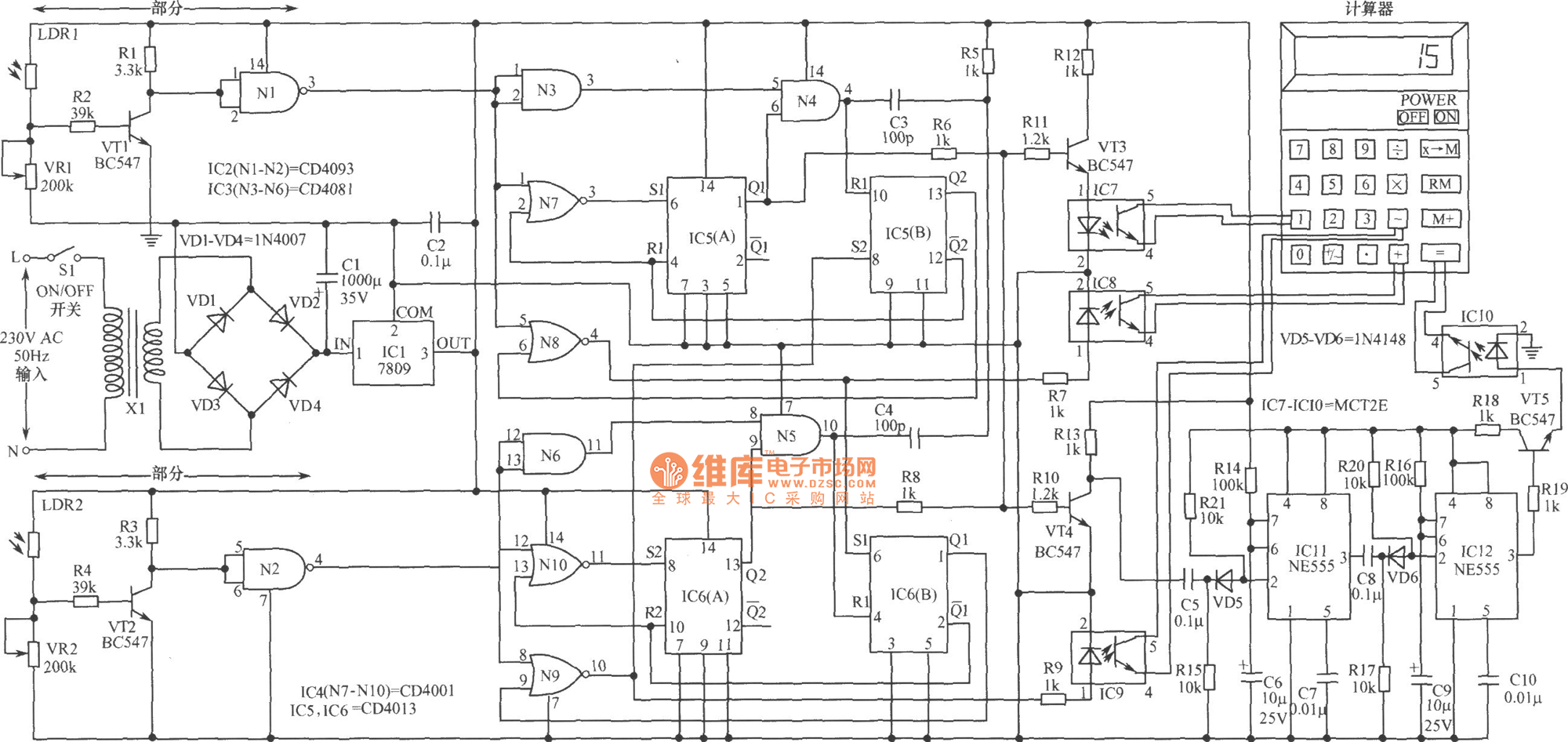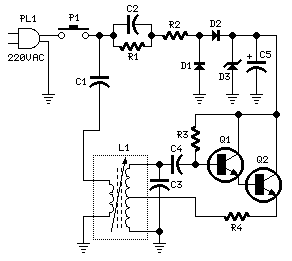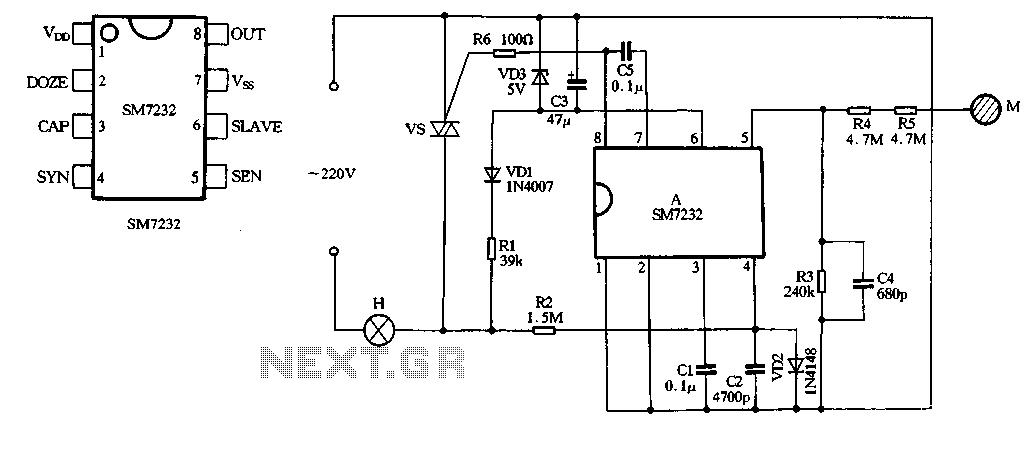
Variable-Frequency Audio Bp Filter Circuit

This variable-frequency audio bandpass filter is constructed using two 741 operational amplifiers (op amps) connected in cascade. Both op amps are configured as identical RC active filters, enhancing the selectivity of the overall circuit. The filter has a tuning range from 500 Hz to 1500 Hz, with an overall voltage gain slightly exceeding 1 and a filter gain of approximately 5. The circuit can accommodate input signals of up to 4 V peak-to-peak without distortion. The input impedance of the circuit exceeds 200 kΩ, while the output impedance is less than 1 kΩ.
The described audio bandpass filter employs two 741 op amps, which are widely recognized for their versatility and reliability in analog signal processing. The cascading configuration of the op amps allows for the combination of their individual gains, resulting in improved selectivity and a more defined frequency response.
The RC active filter design utilizes resistors and capacitors to create a frequency-dependent response, where the cutoff frequencies are determined by the values of these components. In this case, the filter is tuned to pass signals within the range of 500 Hz to 1500 Hz, effectively attenuating frequencies outside this range. This characteristic makes it suitable for applications such as audio signal processing, where it is essential to isolate specific frequency bands.
The overall voltage gain of the filter being slightly greater than 1 indicates that the output signal is amplified, but not excessively, which is beneficial for maintaining signal integrity. The gain of approximately 5 for the filter itself suggests that it is designed to enhance the amplitude of the desired frequency components significantly.
Input handling capabilities of up to 4 V peak-to-peak demonstrate the circuit's robustness, ensuring that it can process typical audio signals without distortion or clipping. The high input impedance of over 200 kΩ minimizes the loading effect on preceding stages, allowing for better signal fidelity. Conversely, the low output impedance of less than 1 kΩ facilitates easy interfacing with subsequent stages of an audio system, ensuring efficient signal transfer.
In summary, this variable-frequency audio bandpass filter utilizing 741 op amps is a well-designed circuit for selective frequency amplification, suitable for various audio applications where precise control over frequency response is required. This variable-frequency, audio bandpass filter is built around two 741 op amps that are connected in cascade. Two 741 op amps are configured as identical RC active filters and are connected in cascade for better selectivity.
The filter`s tuning range is from 500~Hz to 1500 Hz. The overall voltage gain is slightly greater than 1 and the filter`s is about 5, The circuit can handle input signals of 4 V peak-to-peak without being overdriven. The circuit`s input impedance is over 200 kohm. and its output impedance is less than 1 kohm. 🔗 External reference
The described audio bandpass filter employs two 741 op amps, which are widely recognized for their versatility and reliability in analog signal processing. The cascading configuration of the op amps allows for the combination of their individual gains, resulting in improved selectivity and a more defined frequency response.
The RC active filter design utilizes resistors and capacitors to create a frequency-dependent response, where the cutoff frequencies are determined by the values of these components. In this case, the filter is tuned to pass signals within the range of 500 Hz to 1500 Hz, effectively attenuating frequencies outside this range. This characteristic makes it suitable for applications such as audio signal processing, where it is essential to isolate specific frequency bands.
The overall voltage gain of the filter being slightly greater than 1 indicates that the output signal is amplified, but not excessively, which is beneficial for maintaining signal integrity. The gain of approximately 5 for the filter itself suggests that it is designed to enhance the amplitude of the desired frequency components significantly.
Input handling capabilities of up to 4 V peak-to-peak demonstrate the circuit's robustness, ensuring that it can process typical audio signals without distortion or clipping. The high input impedance of over 200 kΩ minimizes the loading effect on preceding stages, allowing for better signal fidelity. Conversely, the low output impedance of less than 1 kΩ facilitates easy interfacing with subsequent stages of an audio system, ensuring efficient signal transfer.
In summary, this variable-frequency audio bandpass filter utilizing 741 op amps is a well-designed circuit for selective frequency amplification, suitable for various audio applications where precise control over frequency response is required. This variable-frequency, audio bandpass filter is built around two 741 op amps that are connected in cascade. Two 741 op amps are configured as identical RC active filters and are connected in cascade for better selectivity.
The filter`s tuning range is from 500~Hz to 1500 Hz. The overall voltage gain is slightly greater than 1 and the filter`s is about 5, The circuit can handle input signals of 4 V peak-to-peak without being overdriven. The circuit`s input impedance is over 200 kohm. and its output impedance is less than 1 kohm. 🔗 External reference





